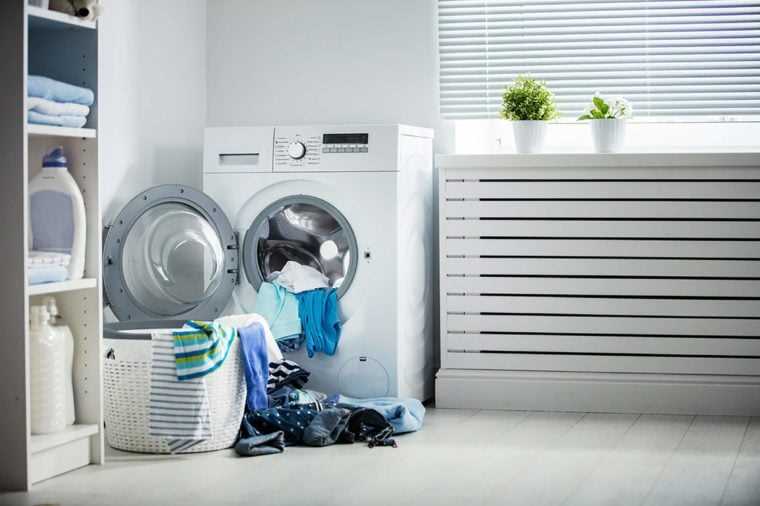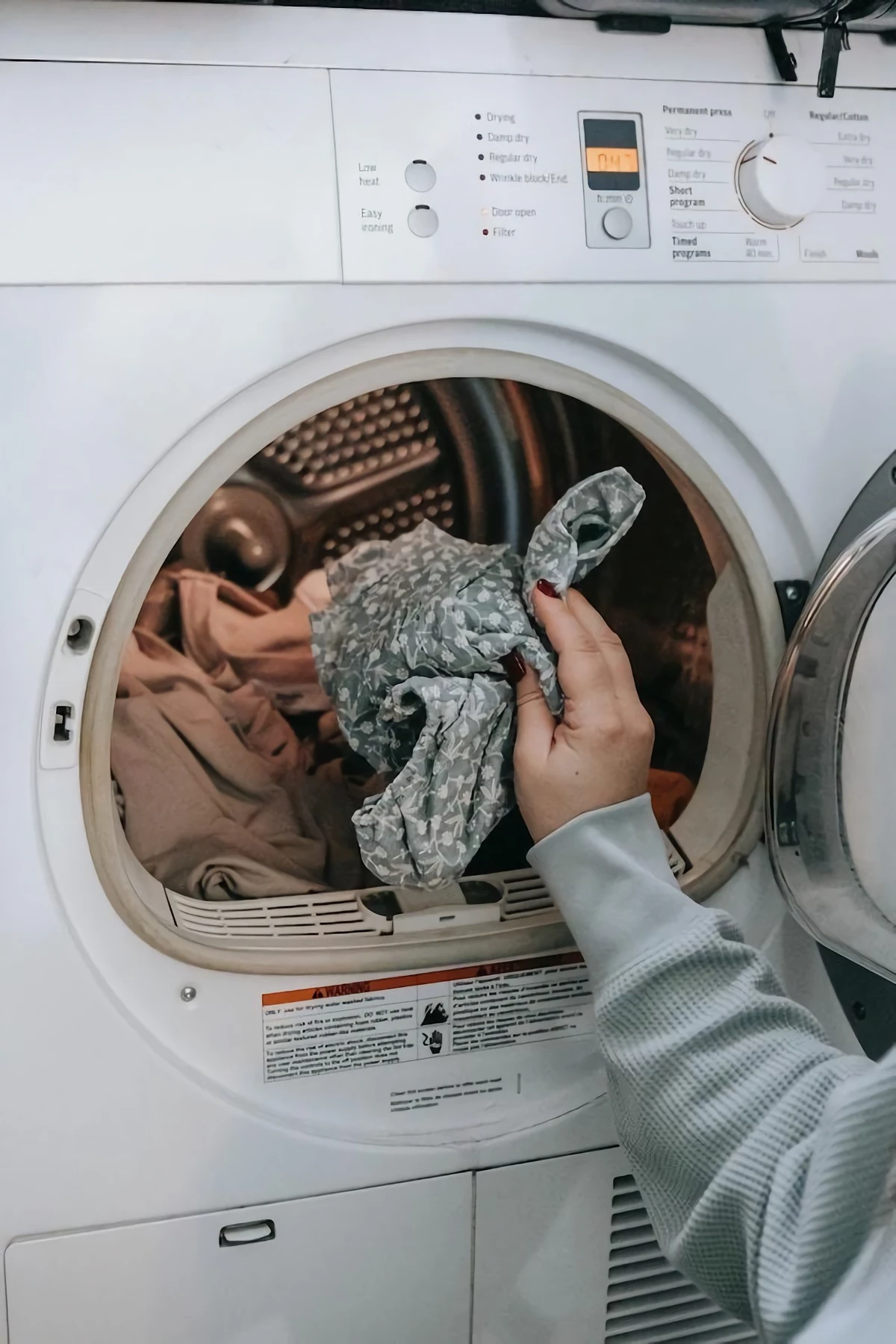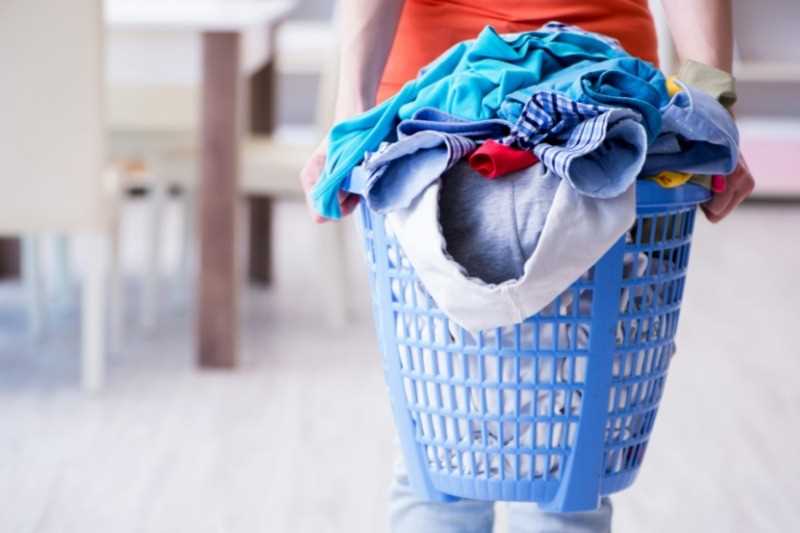




Doing laundry is a necessary chore that we all have to tackle at some point, but it’s surprising how many people make the same mistakes over and over again. These common laundry mistakes can lead to faded colors, shrunken clothes, and even damaged washing machines. In this ultimate guide, we’ll highlight the top 10 laundry mistakes and provide you with expert tips on what to do instead.
One of the most common laundry mistakes people make is overloading the washing machine. It may be tempting to stuff as many clothes as possible into one load to save time, but this can actually lead to poor cleaning results. Clothes need room to move around and agitate in the water in order to get clean. Overloading the machine can also put excessive strain on the motor, causing it to wear out faster.
Another mistake that many people make is using too much detergent. It’s easy to think that more detergent means cleaner clothes, but the truth is that using too much can leave behind a residue on your clothes and in your machine. This residue can lead to dull and dingy colors, and even cause skin irritation for those with sensitive skin. It’s important to always measure your detergent according to the instructions on the packaging.
One of the most frustrating laundry mistakes is accidentally shrinking your favorite sweater or pair of jeans. This can happen when you use hot water or high heat in the dryer. The heat can cause the fibers in your clothes to constrict, resulting in a smaller size. To avoid this, always check the care labels on your clothes and follow the recommended washing and drying instructions. If in doubt, it’s usually best to err on the side of caution and use cooler water and lower heat settings.
By avoiding these common laundry mistakes and following the expert tips in this ultimate guide, you can maintain the quality and longevity of your clothes while also extending the lifespan of your washing machine. So say goodbye to faded colors and shrunken clothes, and hello to fresh, clean laundry that looks and feels great!
Sorting Clothes: How to Do It Correctly
Step 1: Separate by Color

One of the most important aspects of sorting clothes is separating them by color. This prevents colors from bleeding onto each other and keeps your clothes looking fresh and vibrant. Sort your laundry into three main categories: whites, lights, and darks.
Step 2: Consider Fabric Type
In addition to color, it’s essential to consider the fabric type when sorting clothes. Delicate fabrics like silk and wool require special care and should be washed separately from your regular laundry. Separate these garments into a separate pile and follow the manufacturer’s care instructions for best results.
Step 3: Check for Stains
Before washing your clothes, it’s a good idea to check for any stains that may require pre-treatment. Separate the stained garments from the rest and apply a stain remover or detergent directly to the stain. Allow it to sit for a few minutes before adding it to the wash. This step helps ensure that your stained clothes receive the extra attention they need to come out clean.
Step 4: Sort by Water Temperature
Another important consideration when sorting clothes is the water temperature required for each load. Some fabrics and stains require cold water, while others need warm or hot water for optimal cleaning. Sort your laundry into three categories based on water temperature: cold, warm, and hot.
Step 5: Separate Heavy and Light Items
In order to avoid damage to delicate fabrics, it’s a good idea to separate heavy and light items. Heavy garments like jeans, towels, and bedding can create friction and cause damage to more delicate fabrics. Keep heavy items separate from lighter fabrics to ensure the longevity of your clothes.
Step 6: Don’t Overload the Machine
Lastly, make sure not to overload the washing machine. Overloading can affect the cleaning efficiency and wear out your machine faster. Follow the manufacturer’s recommendations for the maximum load size and leave enough space for the clothes to move around freely during the wash and rinse cycles.
Conclusion
Sorting clothes correctly is an essential step in maintaining the quality and longevity of your garments. By separating your laundry by color, fabric type, stains, water temperature, and weight, you can ensure that your clothes come out clean and in the best possible condition. Remember to follow the manufacturer’s care instructions for each garment to prevent any damage during the washing process.
Temperature Settings: Choosing the Right Options
Introduction
Properly selecting the temperature settings when doing laundry is essential for achieving optimal cleaning results while also taking care of your clothes. Different fabrics and stains require different temperatures to achieve the best outcome. In this section, we will discuss the common temperature options and when each one should be used.
Hot Water
Hot water is typically set at a temperature of 60°C (140°F) or higher. This setting is suitable for heavily soiled garments and white cotton items, as it helps to remove tough stains like grease and oil. However, hot water can cause shrinking and fading in some fabrics, so it is important to check clothing labels before using this setting.
Warm Water
Warm water is usually set at a temperatur
Detergent Dosage: Avoiding Overuse and Underuse
Using the right amount of detergent is essential for achieving clean and fresh laundry. Whether it’s overusing or underusing, incorrect detergent dosage can lead to dull, dingy, or even damaged clothes. Here are some tips to help you avoid these common mistakes:
1. Follow the manufacturer’s instructions
The first step to getting the detergent dosage right is to read and follow the instructions provided by the manufacturer. Different detergents have different concentration levels, so it’s important to use the recommended amount for your specific brand and type of detergent.
2. Use the measuring cap or cup
To ensure accurate detergent dosage, use the measuring cap or cup that comes with the detergent packaging. These are specifically designed to help you pour the correct amount of detergent for each load. Avoid estimating or eyeballing the dosage as this can easily lead to overuse or underuse.
3. Adjust the dosage based on load size
The dosage of detergent should be adjusted according to the size of the laundry load. For smaller loads, use less detergent, and for larger loads, use more. Overloading the machine with clothes and using the same amount of detergent as a smaller load can result in inadequate cleaning.
4. Consider water hardness
Water hardness can affect the effectiveness of detergent. If you have hard water, you may need to use a little more detergent to compensate for the mineral content in the water. On the other hand, soft water requires less detergent. Check your local water hardness level and adjust the detergent dosage accordingly.
5. Pre-treat stains
If you’re dealing with stubborn stains, it’s important to pre-treat them before washing. Apply a small amount of detergent directly onto the stain and let it sit for a few minutes before starting the wash cycle. This can help ensure the stain is properly treated without the need for excessive detergent usage.
6. Avoid detergent buildup
Overusing detergent can lead to detergent buildup on your clothes. This can make them look dull and dingy, as well as cause skin irritation. If you notice excessive suds during the rinse cycle or a soapy residue on your clothes after washing, it’s a sign of detergent overload. Reduce the dosage for future loads to prevent buildup.
By following these tips, you can ensure that your laundry is always clean and fresh, without wasting detergent or damaging your clothes. Remember, the right detergent dosage is key to achieving optimal results!
Stain Removal: Tips and Tricks for Different Types of Stains

Stains can be a frustrating and common problem when it comes to doing laundry. Whether it’s a grass stain on your child’s jeans or a coffee stain on your favorite shirt, knowing how to effectively remove different types of stains is essential for keeping your clothes looking their best. Here are some tips and tricks for tackling common stains:
1. Oil-based Stains:
Oil-based stains, such as grease or cooking oil, can be tricky to remove. Start by blotting the stain with a paper towel to absorb any excess oil. Then, apply a small amount of dish soap or a pre-treatment stain remover directly to the stain. Gently rub the fabric together to work the soap into the stain. Rinse with cold water and launder as usual.
2. Ink Stains:
Ink stains can be stubborn, but there are a few methods you can try. If the stain is fresh, blot it with a clean cloth to remove any excess ink. Then, apply rubbing alcohol or a stain remover specifically designed for ink stains. Blot the stain again and rinse with cold water. Repeat the process until the stain is gone.
3. Blood Stains:

Blood stains can be challenging to remove, especially if they have dried. Start by rinsing the stain with cold water to remove any excess blood. Then, apply hydrogen peroxide directly to the stain and let it sit for a few minutes. Blot the stain with a clean cloth and rinse with cold water. If the stain persists, repeat the process or try using a enzyme-based stain remover.
4. Grass Stains:
Grass stains are common, especially for active individuals or children who enjoy outdoor activities. To tackle grass stains, start by pre-treating the stain with a stain remover or a mixture of laundry detergent and water. Use an old toothbrush to scrub the stain gently. Let the stain remover or detergent sit on the fabric for a few minutes before laundering as usual.
5. Coffee or Tea Stains:
Coffee or tea stains can be tough to remove, but there are a few methods to try. Start by blotting the stain with a clean cloth or paper towel to remove any excess liquid. Then, mix one part white vinegar with two parts cold water and apply it to the stain. Blot the stain again and rinse with cold water. If the stain persists, use a stain remover or soak the garment in an enzyme-based detergent before laundering.
6. Wine Stains:
Wine stains can be a source of panic, especially when they occur on light-colored fabrics. Start by blotting the stain with a cloth or paper towel to remove any excess liquid. Then, sprinkle salt on the stain to absorb any remaining wine. Rinse with cold water and apply a stain remover or a mixture of hydrogen peroxide and dish soap. Launder the garment as usual.
7. Sweat Stains:
Sweat stains can be unsightly and affect the appearance of your clothes. To remove sweat stains, start by soaking the garment in a mixture of one part white vinegar and four parts cold water for 30 minutes. Then, rub the stain with a paste made of baking soda and water. Let it sit for a few minutes before laundering.
8. Tomato Sauce Stains:

Tomato sauce stains can be particularly stubborn, but don’t worry. Start by rinsing the stain in cold water to remove any excess sauce. Apply a pre-treatment stain remover or a mixture of dish soap and cold water directly to the stain. Let it sit for a few minutes before laundering as usual.
9. Chocolate Stains:
Chocolate stains can be melted, making them more challenging to remove. Start by gently scraping off any excess chocolate using a butter knife or spoon. Then, apply a pre-treatment stain remover or a mixture of laundry detergent and cold water to the stain. Launder the garment in the hottest water suitable for the fabric.
10. Red Wine Stains:
Red wine stains can be stubborn, but acting quickly can make a difference. Start by blotting the stain with a clean cloth or paper towel to absorb as much wine as possible. Then, rinse the stain with cold water and apply a mixture of hydrogen peroxide and dish soap. Let it sit for a few minutes before laundering as usual.
Remember, always check the care label on your garments before attempting any stain removal methods. If in doubt, it’s best to consult a professional cleaner. By following these tips and tricks, you can increase your chances of successfully removing stains and keeping your clothes looking fresh and clean.
Drying Techniques: Air Drying vs. Machine Drying
When it comes to drying your laundry, there are two main techniques to choose from: air drying and machine drying. Each method has its own advantages and disadvantages, so it’s important to consider which one is best for you and your laundry needs.
Air Drying
Air drying is the most natural and environmentally friendly way to dry your laundry. Here are some key points to consider:
- Cost: Air drying is completely free, as it doesn’t require any electricity.
- Energy Efficiency: Air drying is the most energy-efficient drying method, as it doesn’t consume any electricity.
- Gentleness: Air drying is gentle on your clothes, as there is no heat or tumbling involved.
- Prevention of Shrinkage and Damage: Air drying reduces the risk of shrinkage and damage to delicate fabrics.
- Outdoor Drying: Hanging your laundry outside allows it to benefit from the fresh air and sunlight, which can help remove odors and stains.
Machine Drying
Machine drying offers convenience and speed, but it may not be suitable for all fabrics and clothing items. Here are some important factors to consider:
- Time-Saving: Machine drying is much faster than air drying, as it uses hot air to evaporate moisture from the clothes.
- Convenience: You can set a specific drying time and forget about it, allowing you to multitask or attend to other chores.
- Suitable for Certain Fabrics: Machine drying is suitable for most fabrics, but some delicate or shrink-prone items may require air drying to prevent damage.
- Tendency to Cause Wrinkles: Machine drying can lead to wrinkles and creases in your clothes, especially if you overload the dryer.
- Energy Consumption: Machine drying consumes electricity, which can impact your energy bills and environmental footprint.
Ultimately, the choice between air drying and machine drying depends on your priorities, clothing type, and personal preferences. Some people prefer a combination of both methods to enjoy the benefits of each. Whatever method you choose, it’s important to follow the care instructions on your clothing labels to ensure the best drying results.
FAQ
What are the most common laundry mistakes?
The most common laundry mistakes include overloading the washing machine, using too much detergent, not sorting clothes properly, ignoring care labels, and neglecting to clean the washing machine regularly.
How can I prevent overloading the washing machine?
To prevent overloading the washing machine, make sure to follow the manufacturer’s instructions for load capacity. Avoid stuffing too many clothes into the machine at once, as this can prevent proper agitation and cleaning. It’s better to do multiple smaller loads if necessary.
What happens if I use too much detergent?
Using too much detergent can leave residue on your clothes, which can be difficult to remove. It can also cause excessive foam, leading to poor rinsing and potential damage to the washing machine. Follow the recommended dosage on the detergent packaging for best results.
Why is sorting clothes important?
Sorting clothes before washing is important because different fabrics and colors require different wash temperatures and cycles. Failure to sort clothes properly can result in color bleeding, fabric damage, and ineffective cleaning. Always separate whites, darks, and delicates to ensure the best laundry results.
How often should I clean my washing machine?
It is recommended to clean your washing machine at least once a month to remove any built-up detergent residue, mold, and mildew. Follow the manufacturer’s instructions for cleaning or use a washing machine cleaner to maintain optimal performance and hygiene.
What is the most common laundry mistake?
The most common laundry mistake is not separating clothes by color and fabric. This can lead to clothes bleeding colors or getting damaged in the wash.
What should I do instead of washing clothes on a high heat setting?
Instead of washing clothes on a high heat setting, you should wash them in cold water or according to the care instructions on the label. This can help prevent shrinking, fading, and damage to the fabric.













